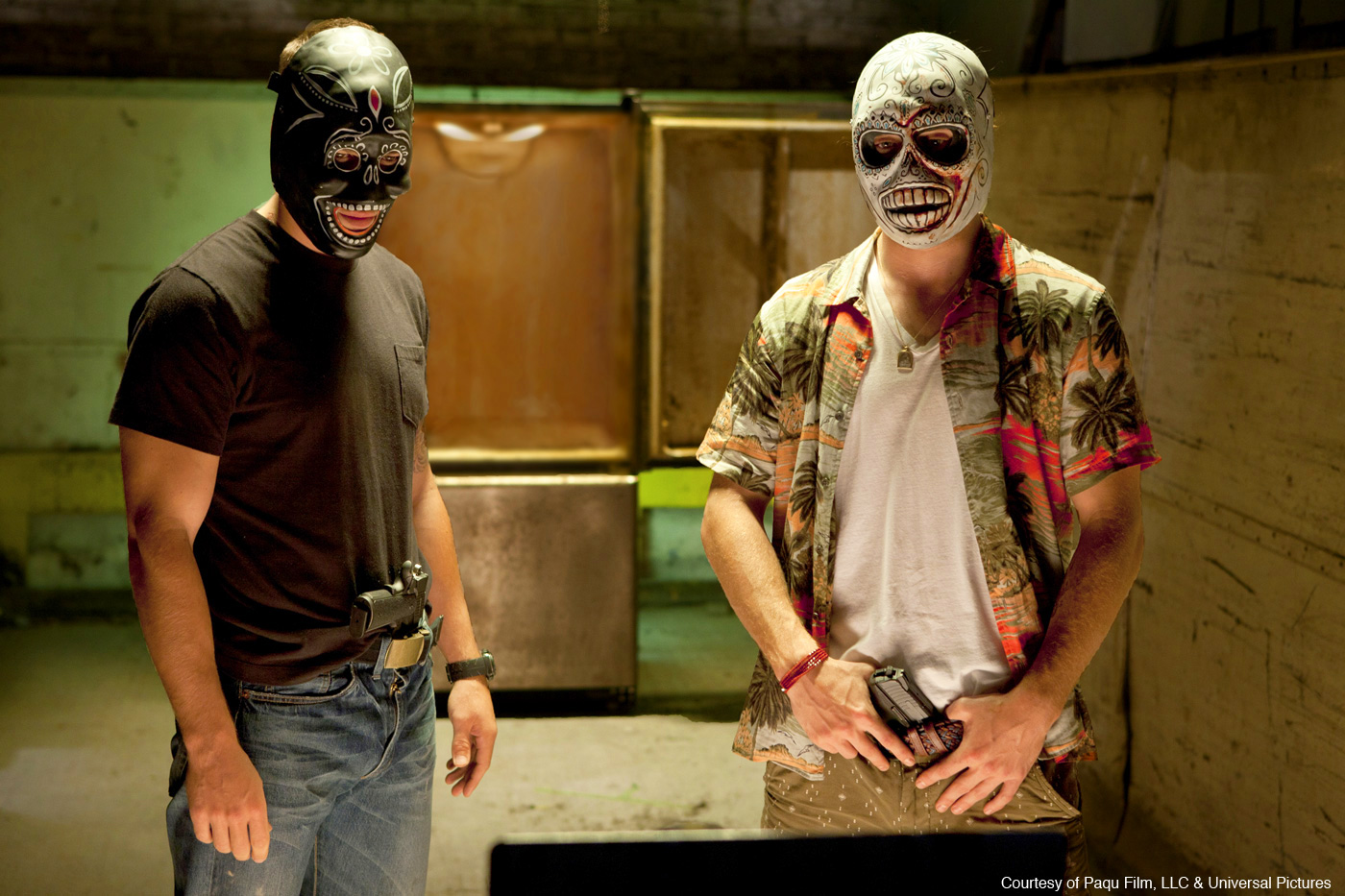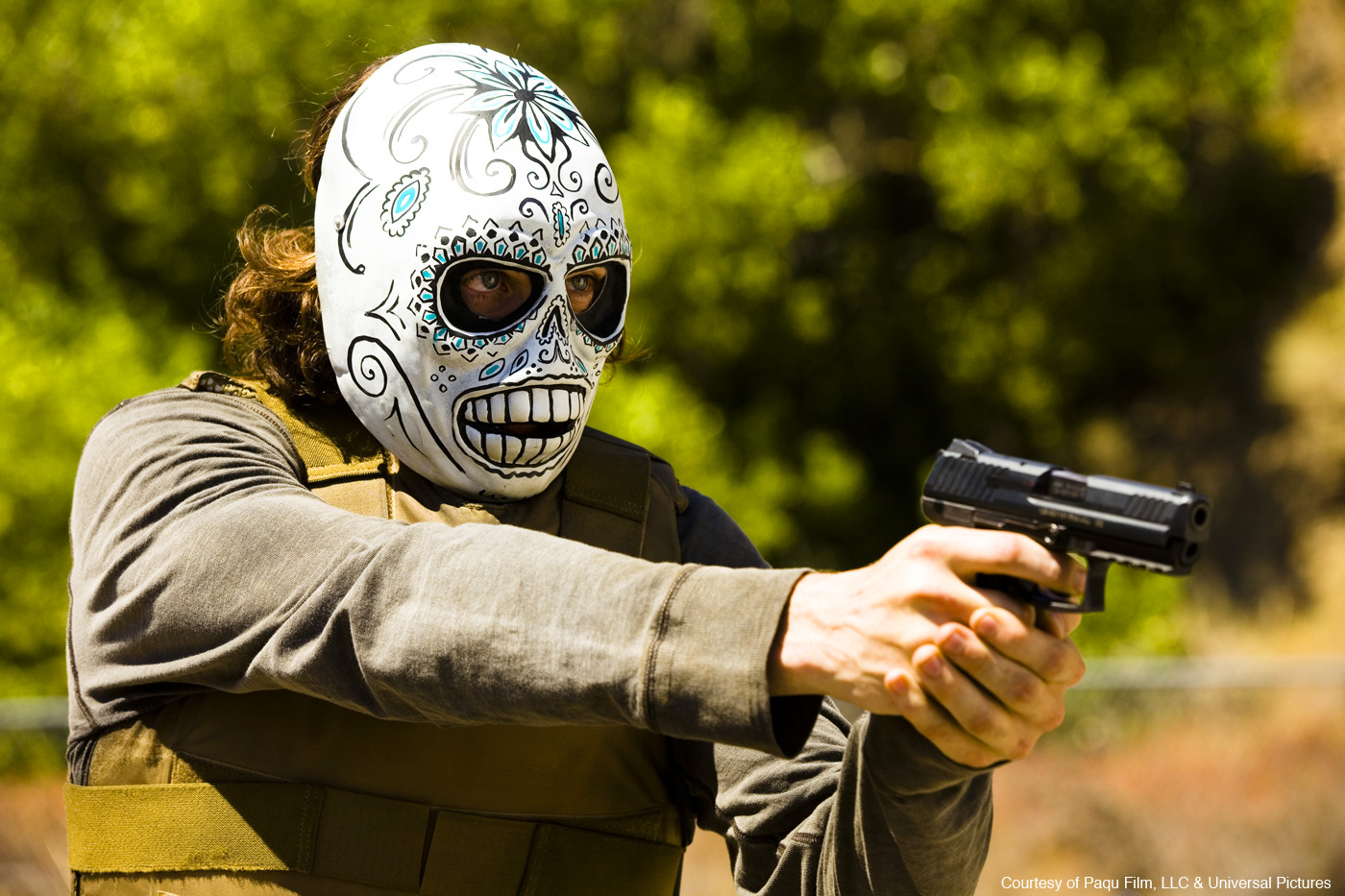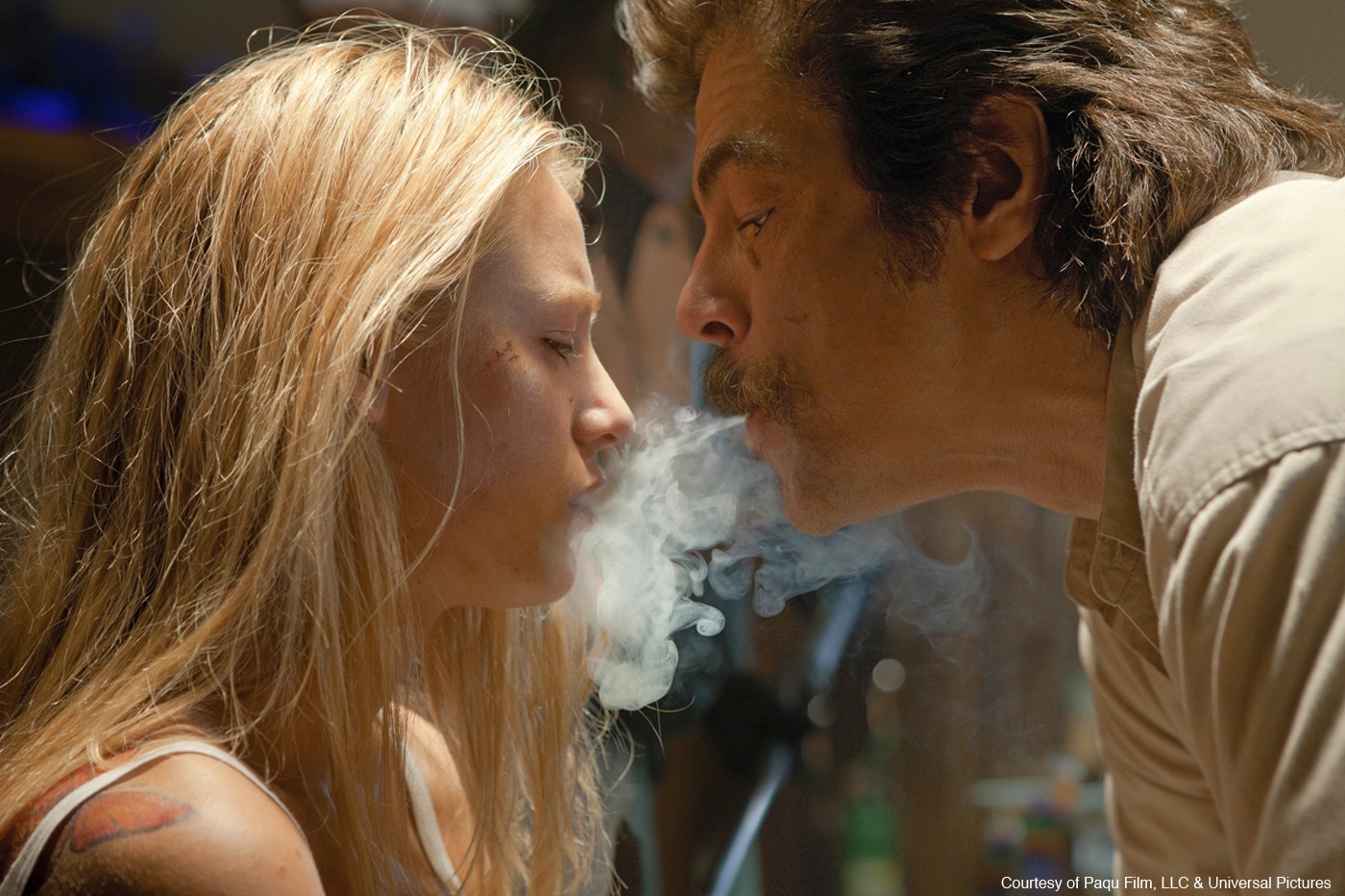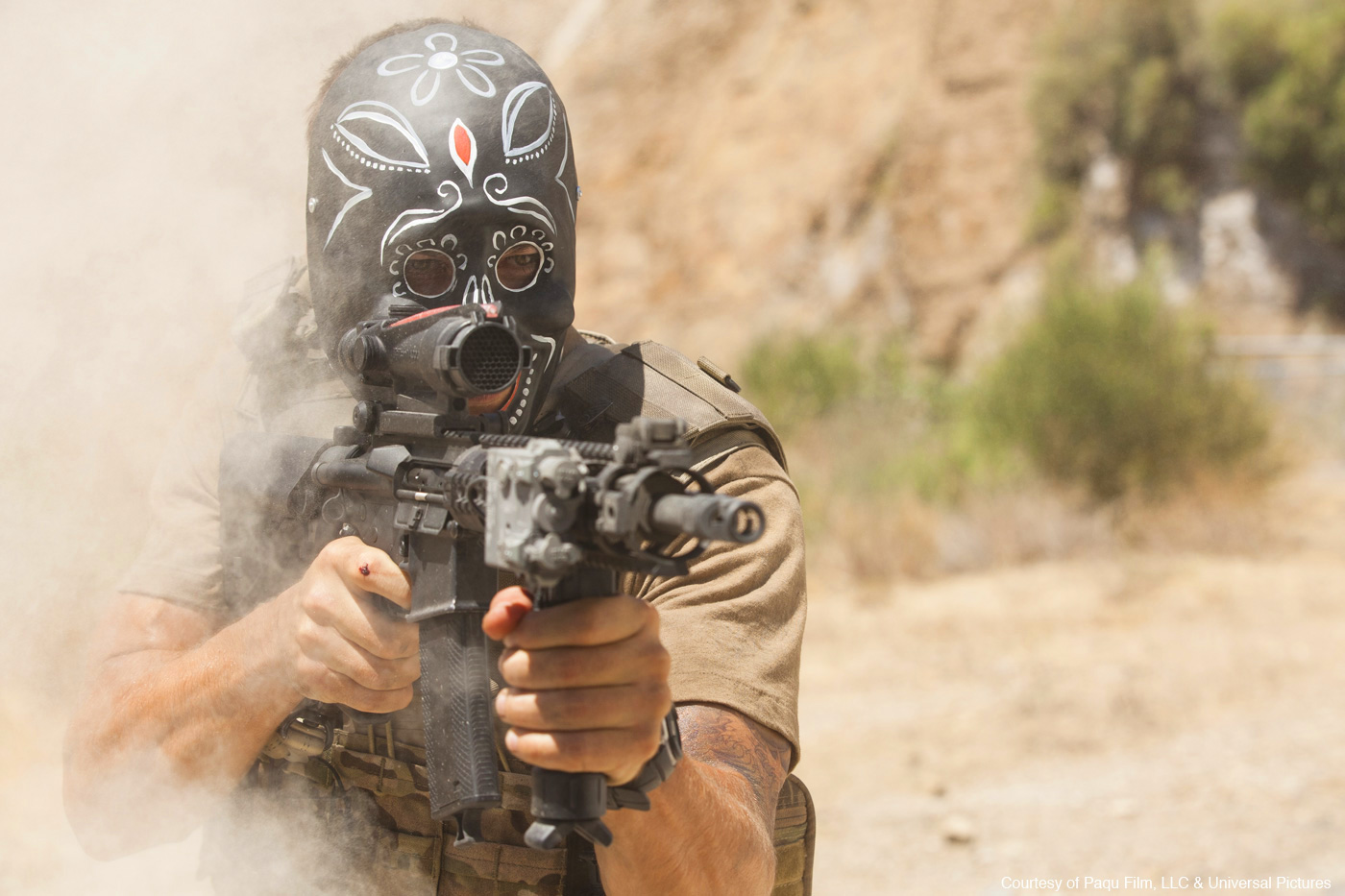Paul and Christina Graff are the founders of Crazy Horse Effects. Before that they worked on many projects at Digital Backlot such as THERE WILL BE BLOOD, THE AVIATOR or TROPIC THUNDER. In the following interview, they talk about their collaboration with director Oliver Stone.
// Paul Graff’s Answers:
Can you tell us more about the creation of your studio Crazy Horse Effects?
I used to work on movie sets, and met some VFX people on set in Germany in the 90’s and got interested that way. I then went to Screen Design school, and started doing films titles for students that I was friends with. I then worked for German TV for a little bit, before coming to the US in 2001. The first project I worked on in the US was CORONADO; an indie movie that was eventually released with Blockbuster.
I started working with a VFX agent after CORONADO, and a few movies later ended up as a Compositor at CafeFX working on MASTER AND COMMANDER. There I met Robert Stromberg, who was Supervising and Matte painting. We hit it off, and after that started working together. We started doing shots from my house essentially and then I worked on a bunch of movies for his company Digital Backlot. I started running his company for him with my wife, Christina as Producer when Robert started to get busy with AVATAR. I supervised THERE WILL BE BLOOD and thereafter came JOHN ADAMS for HBO. After JOHN ADAMS, we founded our own company, Crazy Horse Effects and have essentially had the same team ever since.
There were two things I wanted to do: Be a VFX Supervisor working on set. The other thing I wanted to have was my own company, so they both came into reality with Crazy Horse. We try to be an exceptional company that puts poetry, or something « extra » into every shot we touch. I think that VFX, a lot of time, gets lost in the technicalities, and the artistic vision can be lacking, and that’s what we’re trying to provide.
How did Crazy Horse Effects got involved on this show?
Actually we saw an interview with Oliver Stone on Bill Maher and he was talking about some history project he was working on. Before we went on a long deserved vacation we wrote him a letter saying that we were interested in working on his history project because we had the same political views and wanted to help him with his vision. He called us back and ended up hiring us on the spot for WALL STREET. It was a very crazy ride, and we ended up with his respect. He asked us to be a part of WALL STREET: MNS, UNTOLD HISTORY OF THE US and SAVAGES. We have been working with him as a part of his team ever since.
How was the collaboration with director Oliver Stone?
Olive Stone is like a Thunderstorm. You have to think on your feet, you have to be flexible, but you also have plan things out as best as possible and be ready to go with whatever is happening on the day. You have to be able to adjust strategies on the fly. It’s nice to work with Oliver because we really feel like we’re a part of the creative team, even asking us for our opinions from time to time.
Can you tell us more about your work methodology between you?
It’s the same as it always is. You start with the script. But Oliver Stone is a writer, so the script keeps changing. A lot of times, it’s pretty clear what is going to be needed. You try to discern what can be done with SFX, VFX and Art Department, and then you have to be on set and really make sure that no unnecessary costs are being racked up and at the same time know when and where you can say, « We will take care of this later. »
The movie features an impressive of various film aspects. How were you involved with that?
Oliver Stone is not afraid of mixing formats. From the script, it was obvious that there were going to be a lot of video conferencing taking place. We used several cameras to get the necessary footage without adding to the already pretty tight shooting schedule. During the laptop Skype conversations, instead of using the laptop cameras, we placed a 5D camera with a fisheye lens on the laptop just out of frame of the A camera and were able to acquire hi-res footage to later be composited into the screens. Particularly during the scene where Blake Lively gets slapped around. This footage turned out very interesting, because it was acquired immediately in the seen. The camera was extremely close to the action. In another scene where one cartel member gets killed, we mounted a go-pro camera onto the prop sticks that they used to push the victim in the space of fire. A whole host of other video cameras were used simultaneously – all in addition to the main film cameras. Later, during post production, it was our job to convert the look of some cameras into others in order to maintain continuity.
The movie is quite bloody. Can you tell us more about your work on this aspect?
We tried to avoid having to create closeup exit wounds, but there were a few cases where that was necessary; particularly one shot where one of the Mexican sniper’s head explodes towards camera. For obvious reasons, we were not allowed to shoot that live action.
What are the four movies that gave you the passion for cinema?
Moby Dick
2001: A Space Odyssey
Eternal Sunshine of the Spotless Mind
The Big Lebowski
// Christina Graff’s Answers:
What is your background?
I’m a lefty. Enough said.
Can you tell us more about the creation of your studio Crazy Horse Effects?
Crazy Horse Effects (CHE) was born out of a collaboration with Robert Stromberg’s company, Digital Backlot. Paul and I helped run Digital Backlot for Robert for a few years, but when Robert wanted to focus on production design and didn’t want to have a company any longer, Paul and I created Crazy Horse Effects. We essentially continued operations as CHE, working with the same artists that we worked with at Digital Backlot. CHE specializes in the creation of cg environments, compositing, matte painting, designing and supervision and the production of visual effects.
How did Crazy Horse Effects got involved on this show?
Paul and I did the visual effects for Oliver’s WALL STREET: MONEY NEVER SLEEPS, as well as his documentary series THE UNTOLD HISTORY OF THE UNITED STATES and a little work on CASTRO IN WINTER. Oliver was pleased enough to ask us to become part of his core team moving forward.
How was the collaboration with director Oliver Stone?
It couldn’t be better. It is an exciting collaboration. We get involved in the early stages (during pre-production) to contribute to the design of the vfx. He invites our full participation in designing and shaping the visual effects. The collaboration with oliver is always outstanding. I love him. He is truly a stimulating person to work with and he challenges our artistic vision. Besides, he’s a lefty. I love and respect Oliver immensely.
Can you tell us more about your work methodology between you?
Oliver’s way of working means being receptive to a constantly changing cut of the film; which means you have to be able to quickly understand and fulfill last minute requests, think on your feet and be full of ideas. Working with Oliver as much as we have, I feel like we’re on a similar wave length, which empowers us to at least think that we have a basic understanding of what he would like to see. Particularly from the first read of the script, i’m already thinking in the back of my mind how to envision the creation of the effects. A lot of the time, first impressions are the lasting direction of where they go, because i am able to access the essence of what the shot is trying to say in the context of the film.
What was your approach with the creation of the different matte-paintings?
Honestly, there were very few matte paintings in SAVAGES.
The movie features an impressive of various film aspects. How were you involved with that?
Oliver likes to work with various film and video formats. He mixes media a lot and is not afraid of the source material and its resolution. SAVAGES integrates some old movies, TV shows, amateur video footage, video chat and hacker software.
CHE designed the look for the all of the footage except the hacker software which Mike Sanchez did for live playback.
For video chat footage:
Paul thought of the idea to use a Canon 5D and 7D with a fish-eye lens on set to capture the video chat footage from the correct perspectives. We designed the chat « look » for each scene with the correct interface. Our material was then eroded to mimick chat footage we are used to seeing regularly in our own homes. There is a mix of film material, actual low res video chat footage captured on the computer and canon 5 & 7D footage.
For amateur video footage shot by the « Mexican cartel gang »:
The look took some time to come together for the Mexican cartel footage. The scene is dark and grotesque, so it was important to get it right.
At a moment Ben and Chon attacks a cartel convoy. Have you extended the car explosions of this sequence?
The SPFX Supervisor, Mark Byers is primarily responsible for the awesome explosions. He did such a great job, that there was very little left for us to do.
Can you tell us more about the design and creation of the map showing the plane moving from Mexico to USA?
We are working on Oliver’s new documentary for which we created a ton of various maps. The idea for this map came out of that work.
The movie is quite bloody. Can you tell us more about your work on this aspect?
The movie got bloodier the longer we worked on it. Bill Corso was the make-up FX artist on SAVAGES and he is a master at wounds. We took our cues from him and even collaborated with him during post. The bloodshed in Mexico is a reality and we could not diminish the severity of it by showing bad wound and blood work. It had to be real. Once Oliver saw that we could delver that type of effectiveness, he kept asking for more.
Have you collaborated with KNB for the gore effects?
No.
Can you tell us more about the sequence in which Lado is hitting a guy with two whips?
We shot for several days, and it was a very visceral experience. the scene is gruesome. It displays the worst qualities humans can have, and that was the point of the scene for me. In order to take the scene a little bit further, we thought of attaching small « go-pro » cameras to the prodding sticks used when the torture victim was set on fire. We also set up multiple cameras from surveillance perspectives (in addition to what the DoP used) to facilitate communication for the video conferences.
The tricky thing is this: When you’re writing, you have many tools (alliteration, percussion, hyperbole) to convey the emotion of the scene and the character’s experience. With a visual art like film, you have to do that with images. I think it is for this reason that Oliver likes to use illustrative sequences. It allows him to show you where the character is going in their mind and give you a piece of their emotional experience. This kind of story telling was used in this scene, and it’s always exciting to work on scenes with Oliver that are as visceral as this.
Is there an invisible effect you want to reveal the secret to us?
Well, truthfully, you shouldn’t be able to detect any of our work. What was most fun was shooting the back of the Mexican cartel guy’s head off because we got to produce our own VFX shoot with Bill Corso and Mark Byers to make it happen. Love working with those guys.
What was the biggest challenge on this project and how did you achieve it?
It’s funny, but the hardest sequences we created didn’t stay in the movie. Right before we polished those sequences, they were cut from the film.
Was there a shot or a sequence that prevented you from sleep?
Many.
What do you keep from this experience?
We love oliver stone. he is brilliant. That is what we think every time we work with him!
How long have you worked on this film?
One year.
How many shots have you done?
We did about 350 regular shots for SAVAGES and several sequences which all contained about 10-20 shots within each sequence each. It probably was over 400 shots in the end.
What was the size of your team?
We work on several movies at once, so SAVAGES had about 15-20 people working on it at any given time.
What is your next project?
Many. Finishing LIFE OF PI and the gangster squad now. working on IDENTITY THIEF, BOARDWALK EMPIRE and a few other to be disclosed later. also still trying to finish oliver’s documentary: THE UNTOLD HISTORY OF THE US.
What are the four movies that gave you the passion for cinema?
To answer that you should know when our formative cinema years were. That would be the 70s and 80s for me. I cannot just pick four. Here’s what is off the top of my head:
2001: A SPACE ODYSSEY
ONCE UPON A TIME IN AMERICA
THE CONVERSATION
TO KILL A MOCKINGBIRD
BUTCH CASSIDY AND THE SUNDANCE KID
MIDNIGHT EXPRESS
IN THE HEAT OF THE NIGHT
THE FOG OF WAR
DOCTOR ZHIVAGO
PLATOON
THE LOST HONOR OF KATHARINA BLUM
THE BIG LEBOWSKI
THE STING
PAPILLON
MY LIFE AS A DOG
THE CONSTANT GARDNER
INCIDENT AT OGLALA
LEN LYE’S FREE RADICALS
HEAVEN CAN WAIT
M: EINE STADT SUCHT DEN MÖRDER
APOCALYPSE NOW
SPLENDOR IN THE GRASS
WALTER RUTTMANN’S OPUS
ROCKY HORROR PICTURE SHOW
ALMOST FAMOUS
ETERNAL SUNSHINE OF THE SPOTLESS MIND
ARGO
A big thanks for your time.
// WANT TO KNOW MORE?
– Crazy Horse Effects: Official website of Crazy Horse Effects.
© Vincent Frei – The Art of VFX – 2012











